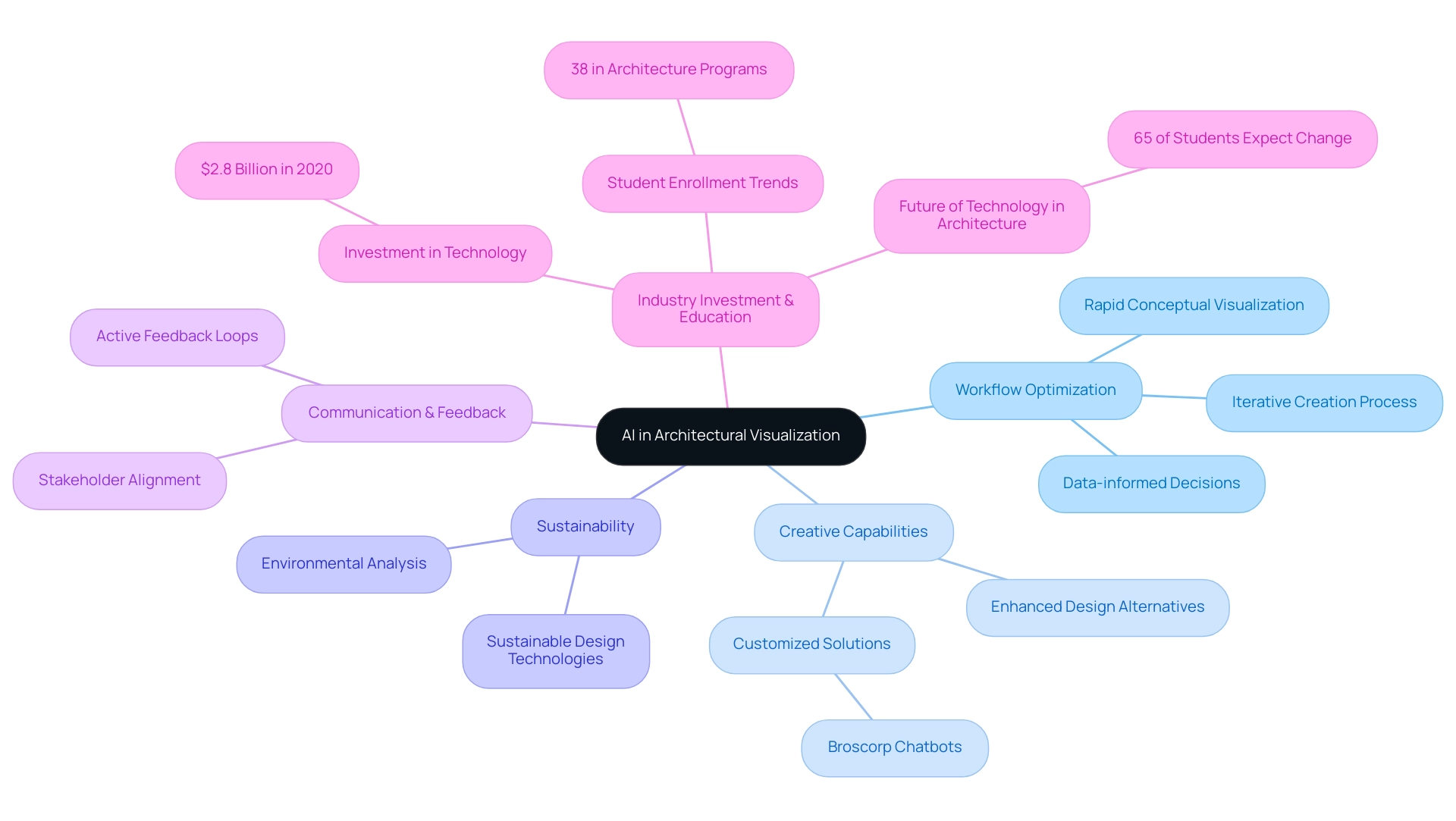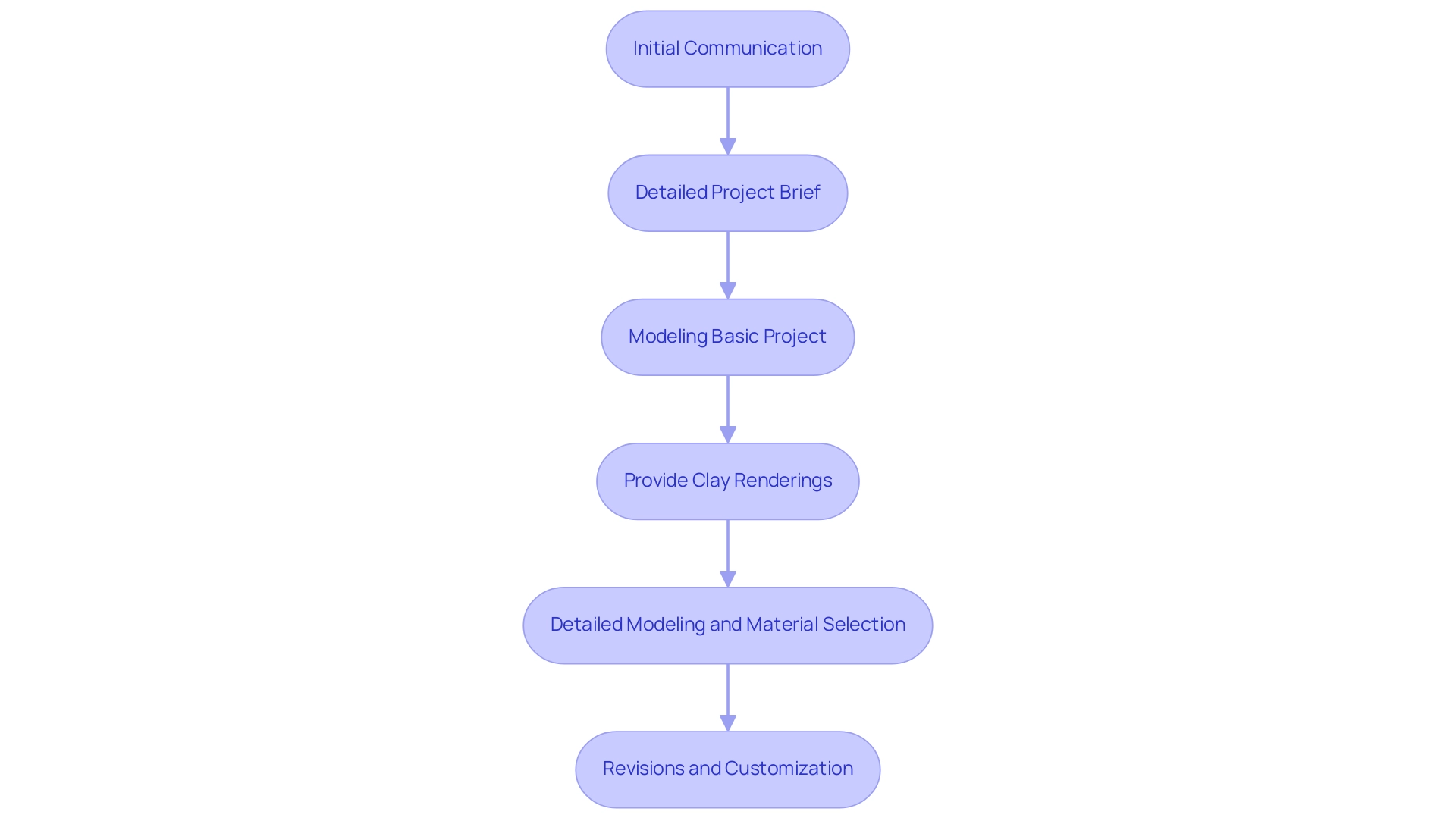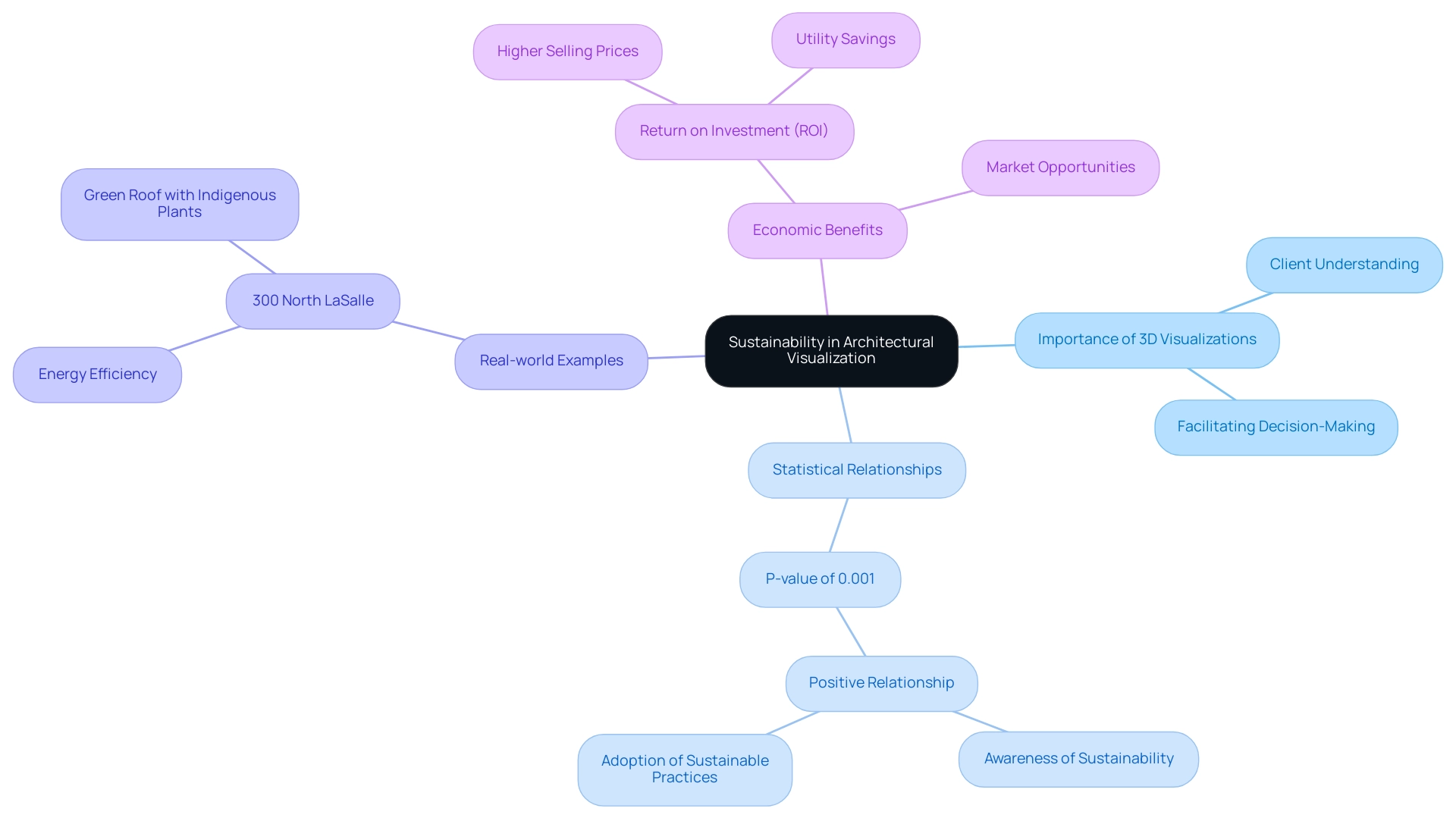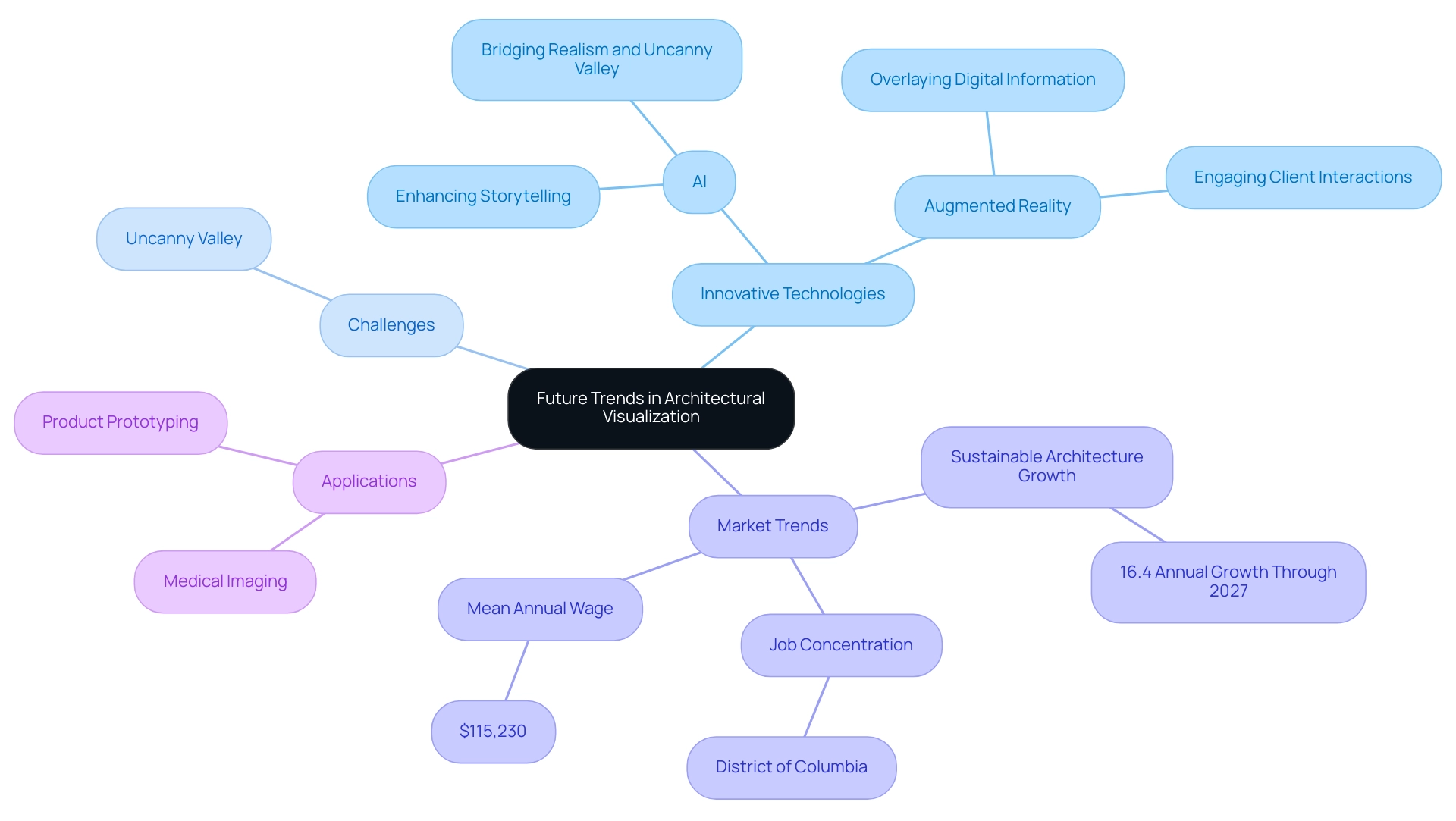Overview
The future of architectural visualization technology is expected to be shaped significantly by advancements in artificial intelligence (AI), real-time rendering, and a strong emphasis on sustainability. The article outlines how these technologies enhance creative workflows, improve collaboration among stakeholders, and facilitate informed decision-making, ultimately leading to more efficient and environmentally-conscious architectural practices.
Introduction
The architectural visualization landscape is experiencing a profound transformation, driven by the integration of cutting-edge technologies such as artificial intelligence, real-time rendering, and augmented reality.
These advancements are not merely enhancing the aesthetic appeal of architectural presentations but are fundamentally reshaping the workflow and collaborative processes within the industry.
By harnessing the power of advanced algorithms and immersive technologies, architects can explore design alternatives with unprecedented speed and precision, ensuring that sustainability and client engagement remain at the forefront of their projects.
As firms increasingly prioritize eco-friendly practices and innovative visualization tools, the future promises a convergence of creativity and technology that will redefine how architectural concepts are communicated and realized.
This article delves into the pivotal role of these technologies in elevating architectural visualization, exploring their implications for design efficiency, stakeholder collaboration, and sustainable practices.
The Role of AI in Shaping Architectural Visualization
Artificial Intelligence (AI) is profoundly transforming architectural visualization by optimizing workflows and broadening creative capabilities. Advanced AI algorithms possess the ability to analyze vast datasets, allowing planners to quickly produce alternatives customized to specific parameters. For instance, AI-enhanced tools can refine spatial layouts for optimal natural light access and energy efficiency, empowering designers to make data-informed decisions at the initial stages of design.
Additionally, the incorporation of initial conceptual visuals provides various benefits for designers and builders. These representations facilitate rapid visualization of concepts, allowing prompt feedback and modifications, while also being economical for early-stage exploration. They enable informed decision-making, ensuring stakeholders can assess creative directions without significant resource commitment, and improve communication among architects, customers, and stakeholders, keeping everyone aligned from the outset.
The iterative creation process is a unique advantage of these visuals, as they facilitate numerous revisions and enhancements based on feedback, resulting in better outcomes. The collaborative rendering process at J. Scott Smith Visual Designs exemplifies this approach, starting from initial communication to detailed 3D models, ensuring client satisfaction through active feedback loops. As noted by Broscorp, ‘At Broscorp, our custom chatbots offer personalized project insights tailored to your firm’s needs,’ illustrating how AI tools can provide bespoke solutions for architectural firms.
In 2020, architecture firms in the U.S. invested over $2.8 billion in software and technology, underscoring the industry’s commitment to integrating advanced tools like AI into their creative processes. With 38% of 11,697 students enrolled in Master of Architecture and Doctor of Architecture programs, the educational landscape is increasingly aligning with these emerging technologies. Looking ahead to 2024, the convergence of AI is expected to yield significant advancements in the future of architectural visualization technology, particularly in sustainability.
With 72% of architectural firms prioritizing sustainable practices, AI’s role in environmental sustainability analysis is becoming more critical, as highlighted in case studies demonstrating its application in addressing environmental concerns.
Advancements in Rendering Technologies: Real-Time and Virtual Reality
Recent advancements in visualization technologies, particularly in real-time processing and virtual reality (VR), represent the best the future of architectural visualization technology as they dramatically reshape the landscape of architectural representation. Real-time visualization enables builders to see alterations quickly, promoting prompt feedback and ongoing enhancements during the creation process. Leading tools such as Unreal Engine, Lumion, and software from industry giants like Adobe, Autodesk, and Chaos Software exemplify this trend, enabling designers to create immersive environments that can be shared seamlessly with customers and stakeholders.
According to recent statistics, the use of virtual reality in architecture has increased by over 60% in the last two years, demonstrating its growing importance in the field. Furthermore, virtual reality elevates this experience, allowing users to navigate through unbuilt spaces and gain an unparalleled understanding of scale and spatial relationships. High-quality illustrations serve as an essential glimpse into the future of a project, enabling all stakeholders to visualize the intent and make informed decisions.
Famous designer Jane Doe declares, ‘Real-time visualization technologies have transformed how we share our concepts, facilitating the communication of our ideas to customers.’ This capability fosters a deeper engagement between architects and those they serve, enhancing the overall presentation of designs while building stronger connections. Our collaborative creation process at J. Scott Smith Visual Designs begins with initial communication, where we gather project goals and vision.
This is followed by detailed project briefs, where customer feedback is integral at every stage. We model the basic project and provide clay renderings for initial feedback, then proceed to detailed modeling and material selection, ensuring that each element reflects the customer’s intent. This iterative process allows for necessary revisions and customization that resonate with the emotional and lifestyle aspects of residential architecture.
As these technologies continue to evolve, their integration into architectural workflows promises to streamline processes and enhance the best in architectural visualization technology for the future.
Sustainability in Architectural Visualization: A Growing Priority
Sustainability continues to evolve as a pivotal theme within the best the future of architectural visualization technology, driven by a heightened awareness of environmental impacts among designers. However, the role of high-quality 3D visualizations cannot be overlooked when considering the best the future of architectural visualization technology. These renderings serve as the best example of the future of architectural visualization technology, providing a realistic view of projects that enhances client understanding and facilitates informed decision-making.
Statistical analysis reveals a compelling P-value of 0.001, underscoring a significant positive relationship between professionals’ understanding of sustainability concepts and their adoption of sustainable practices. Advanced visualization tools represent the best the future of architectural visualization technology, allowing architects to model and analyze energy performance, material usage, and overall environmental footprints while creating representations that emphasize aesthetic appeal and showcase sustainable features like solar panels and green roofs. These tools frequently incorporate advanced sensors and algorithms that manage temperature, humidity, and air quality, further improving the sustainability of architectural structures.
For instance, the architecture of 300 North LaSalle exemplifies this commitment to sustainability, incorporating energy-efficient solutions such as solar shading and a green roof featuring indigenous plants covering over 50% of the surface. Moreover, by identifying potential design issues early, 3D visualizations help save costs in project design development; for example, timely adjustments can prevent costly redesigns and delays, leading to more efficient outcomes. Moreover, high-quality visuals generate enthusiasm for projects, enabling customers to envision the best the future of architectural visualization technology and cultivating a shared vision among stakeholders.
This shift towards sustainability, combined with the best the future of architectural visualization technology in remarkable 3D renderings, is not simply a fleeting trend; it has become an essential factor for project approval and customer satisfaction. As architects adopt eco-friendly practices and invest in high-quality visualizations, they establish themselves as leaders in the field, demonstrating the best of the future of architectural visualization technology while delivering projects that align financial viability with environmental stewardship. Investing in sustainability adds real monetary value, as noted by the National Association of Realtors, thereby validating the credibility of eco-friendly projects and opening new market opportunities.
Moreover, informing customers about the ROI of sustainable practices can generate substantial benefits, such as increased selling prices and utility savings, thus strengthening the economic merits of these approaches.
Enhancing Collaboration Through Visualization Tools
In the field of architectural projects, effective collaboration is essential, and the best the future of architectural visualization technology, particularly advanced 3D images, plays a crucial role in facilitating this process. These tools not only enhance communication among architects, engineers, and stakeholders but also help resolve design issues early, ultimately streamlining workflows. The process starts with initial communication, where our virtual assistant can answer basic questions 24/7, ensuring that clients feel supported from the outset.
Following this, we have a detailed project brief to understand your vision and specific rendering needs. As the architectural landscape evolves, the demand for sustainable architecture is projected to grow by 16.4% annually through 2027, underscoring the need for efficient communication strategies. Notably, Virginia has been recognized as the best state for architects to live in, reflecting a supportive environment for professionals in the field.
Platforms that enable real-time sharing of 3D models empower stakeholders to engage in informed discussions, fostering a collaborative environment where decisions are made collectively. Tools such as Building Information Modeling (BIM) not only streamline communication but also enhance alignment among all stakeholders throughout the design process. This collaborative framework significantly reduces the risk of misunderstandings and errors, ultimately contributing to improved project outcomes and increased customer satisfaction.
Moreover, the narrative component of 3D architectural illustrations conveys designers’ ideas into clear visuals, nurturing stronger relationships with customers. One of our clients, Kirk Bianchi from Bianchi Design, noted, ‘Scott is a pleasure to work with and his attention to the details of your project will make it shine!’ As the educational landscape remains robust, with 175 accredited architecture programs across 139 institutions in the U.S. and an enrollment of 30,068 students in the AY 2022-2023, the next generation of design professionals is being prepared to navigate these collaborative challenges.
Cities like Atlanta, San Francisco, and New York highlight the regional demand for designers, illustrating the practical implications of collaboration tools in various markets. The integration of these technologies is essential for designers seeking to navigate the complexities of modern projects and deliver the best results, showcasing the future of architectural visualization technology.
Future Trends in Architectural Visualization: Innovations and Insights
The future of architectural visualization technology is set to undergo significant transformation, driven by innovative technologies such as AI, which is bridging the gap between realism and the uncanny valley through lifelike CG humans. This advancement improves architectural presentations, enabling a more immersive storytelling experience that resonates with audiences and stakeholders alike. The concept of the uncanny valley highlights the challenge of creating CG humans that are both realistic and relatable, a hurdle that AI is helping to overcome.
The integration of augmented reality (AR) further empowers designers to overlay digital information onto real-world environments, enriching design reviews and fostering more engaging client interactions. As these technologies evolve, it is imperative for architects to refine their visualization strategies to incorporate the best the future of architectural visualization technology, ensuring they remain competitive in an increasingly digital landscape. The demand for sustainable architecture is projected to grow by 16.4% annually through 2027, underscoring the urgency for firms to adopt innovative visualization methods.
3D visualization technologies are not only crucial in architecture but also play significant roles in fields like medical imaging and product prototyping, showcasing their diverse applications. Collaborating with J. Scott Smith Visual Designs for preliminary renderings can offer the clarity needed to visualize and validate your architectural concepts effectively. Embracing digital maturity and automation, as demonstrated by the fastest-growing architecture firms today, will not only improve processes but also elevate the overall client experience in the architectural landscape.
Contact us today to schedule a consultation and see how we can help bring your design concepts to life.
Conclusion
The integration of advanced technologies such as artificial intelligence, real-time rendering, and augmented reality is revolutionizing architectural visualization, offering architects enhanced capabilities to optimize workflows and foster collaboration. AI’s ability to analyze vast datasets enables rapid generation of design alternatives, while real-time rendering tools facilitate immediate feedback, allowing for iterative improvements. These advancements not only streamline the design process but also empower architects to engage stakeholders more effectively, ensuring that client visions are realized with precision and clarity.
Sustainability remains a central focus in architectural design, with high-quality visualizations serving as critical tools to communicate eco-friendly features and benefits. As the industry increasingly prioritizes sustainable practices, architects are leveraging advanced visualization techniques to model energy performance and environmental impact, thus aligning aesthetic appeal with responsible design. The ability to visualize projects that incorporate sustainable elements enhances client understanding and fosters shared goals, ultimately leading to greater project approval and satisfaction.
Looking ahead, the architectural visualization landscape is poised for further innovation, driven by the need for immersive experiences and effective collaboration. As technologies evolve, architects must adapt their strategies to maintain competitiveness and meet the growing demand for sustainable architecture. By embracing these advancements, firms can not only enhance their design processes but also elevate the client experience, paving the way for a future where creativity and technology converge seamlessly in the realm of architecture. The journey toward this future underscores the importance of integrating cutting-edge visualization tools as essential components of modern architectural practice.






0 Comments